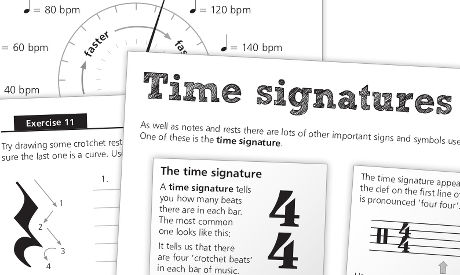
Learn to Read Drum Music is ideal for complete beginners and is suitable for approximately ages 10 and above, no matter what style of music you play.
It starts with the basics and carefully explains concepts such as Pulse, Beats, Notes and Rests. It then moves on to more complicated aspects of drum notation and covers topics such as triplets, compound time and Coda sections.
The books have been designed to make you into a stronger reader, so that you can spend more time drumming and less time deciphering the dots, lines, words and symbols that can often be quite confusing.
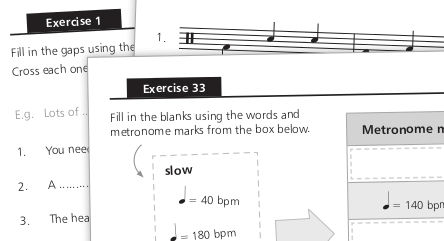
Learn to Read Drum Music is full of short exercises and brain teasers to help you to develop your rhythmical skills.
Each exercise is different, varying between activities such as adding the missing bar-lines to arranging a set of dynamics into the correct order. As well as answering questions there are also plenty of chances to practice drawing the notes, rests and symbols yourself.
When a section is complete, the exercises can then be marked by your teacher.
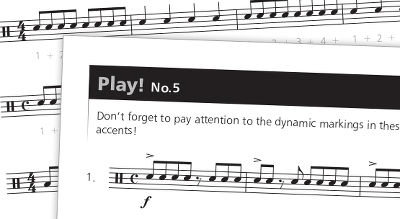
Throughout the books there are fun pieces for you to play on the drum kit. These are great for checking how well you understand particular topics and let you actually try out some of the things you have just learnt.
Each ‘Play!’ section starts off fairly easy and tends to stick to a small number of drums or cymbals. As you progress the pieces get gradually more and more challenging, so that your skills and abilities are stretched as much as possible.
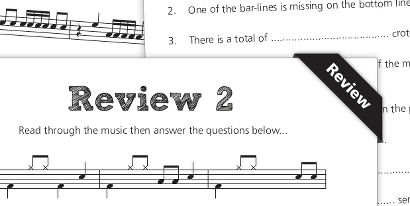
Each book has three review sections to test you on the knowledge you have gained so far. These are like mini tests, and include questions and exercises about everything you have learnt, helping you not to forget!
Exercises include drawing in notes and symbols where they are missing and answering questions about the music on the page. The pieces found in each review section can even be performed, as although they are only short, they are still pieces in their own right.
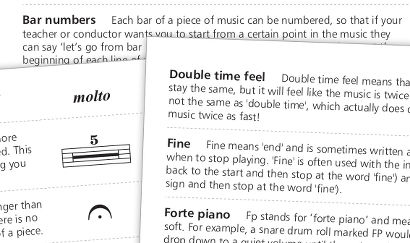
At the back of each book are tables of information that you can use to quickly look things up. Book 1 includes information on which line or space each drum and cymbal lives on; a table of note/rest values and a table of dynamics. Book 2 extends this further with a dictionary of some of the more advanced terms and symbols that you will find on the music that you play.
Even when the books have been completed, they will still be really useful in future in case you need to check something, or remind yourself how to count a bar of 9/8 for example.